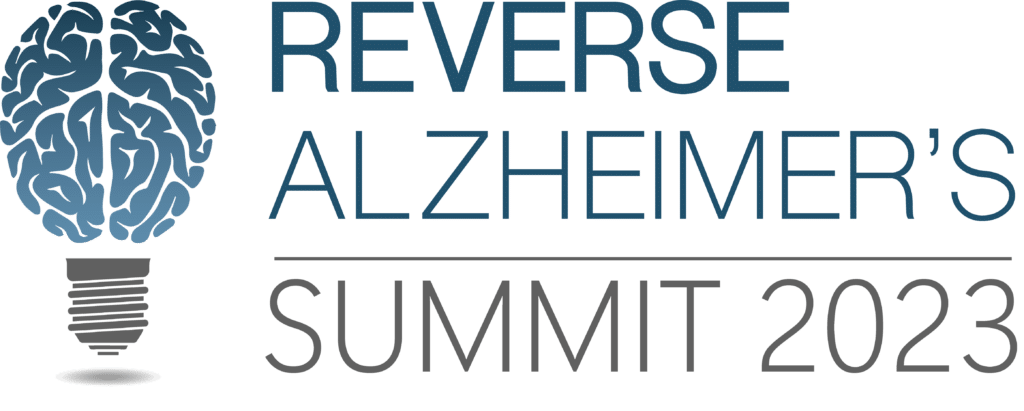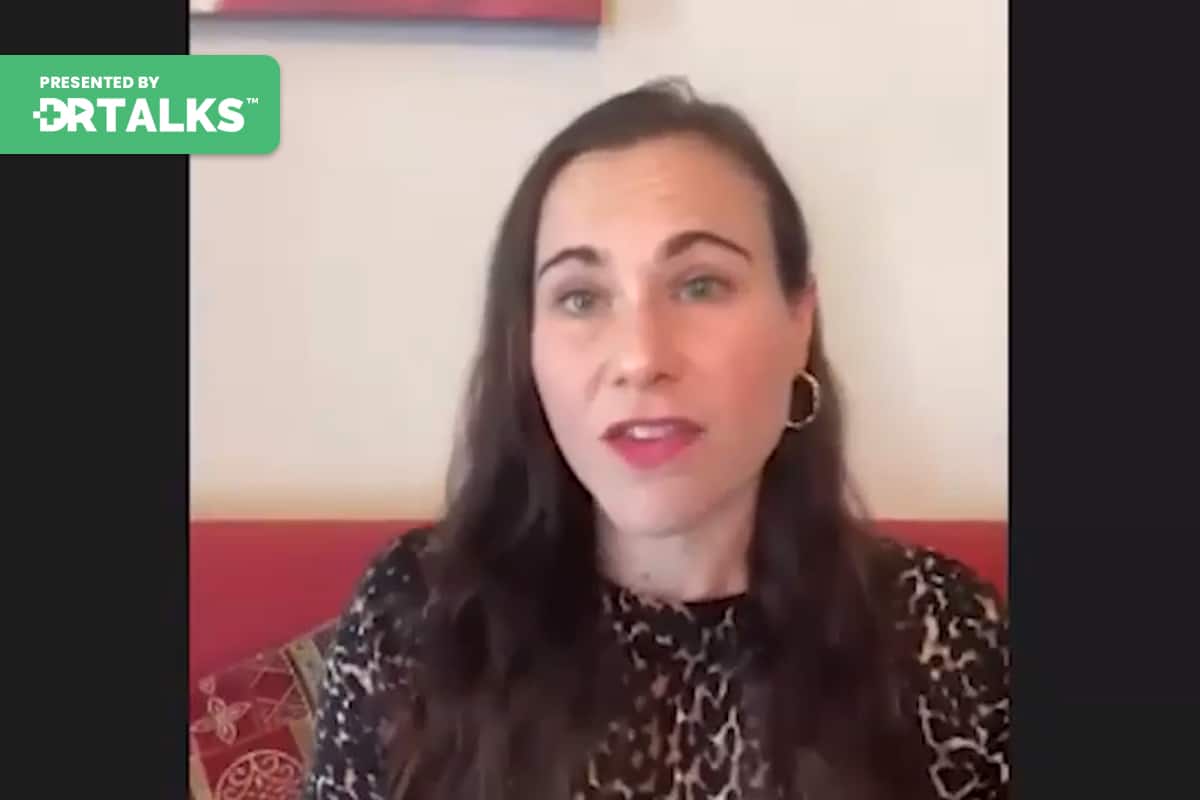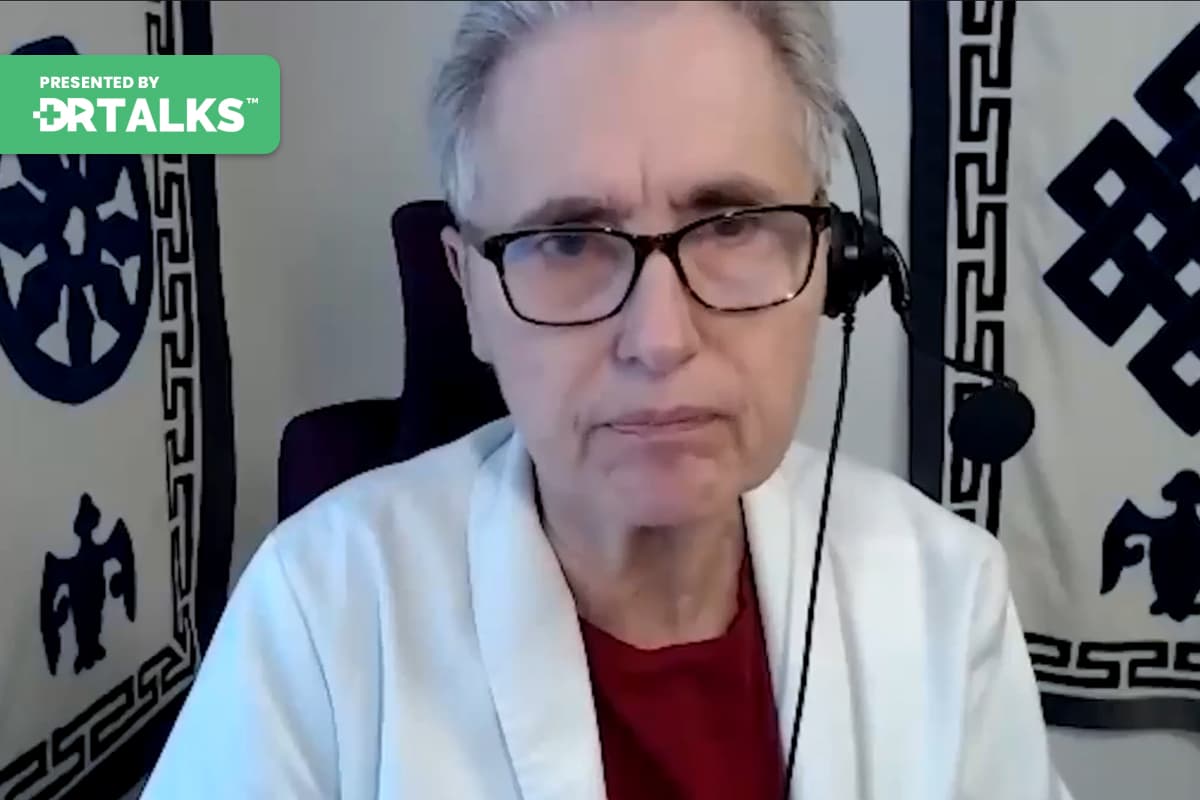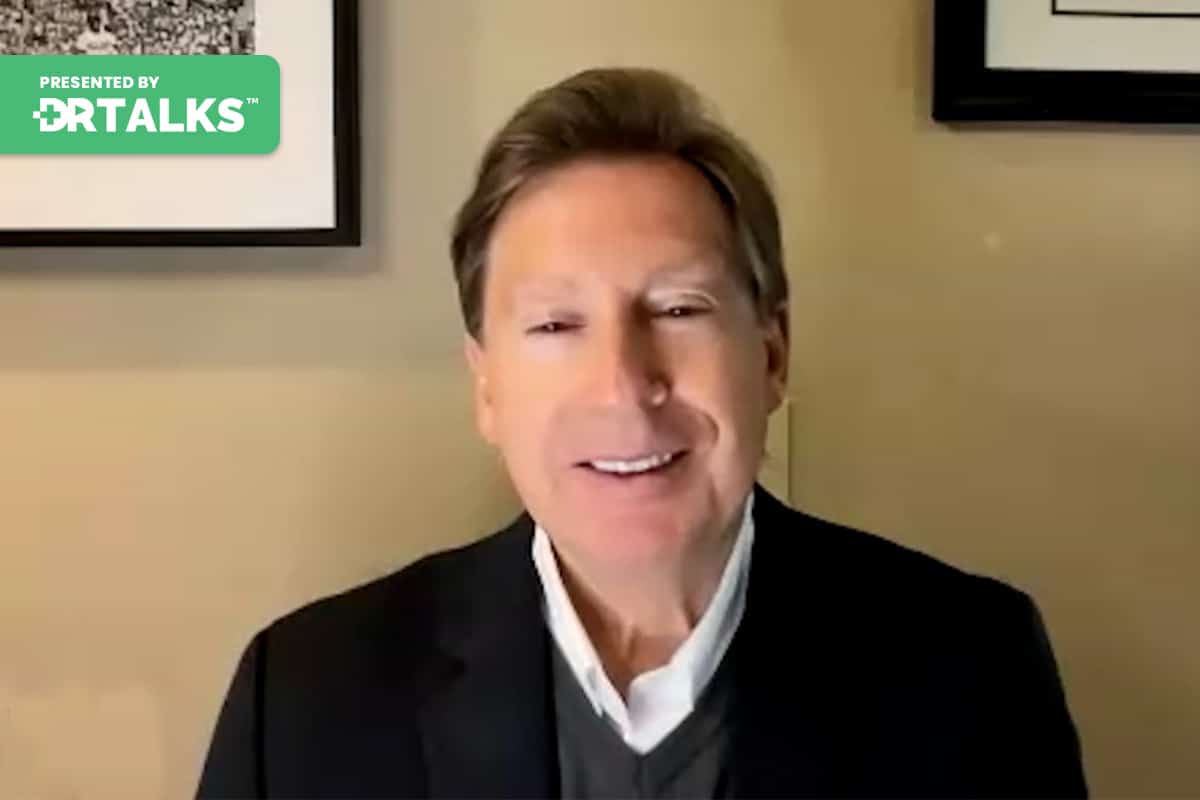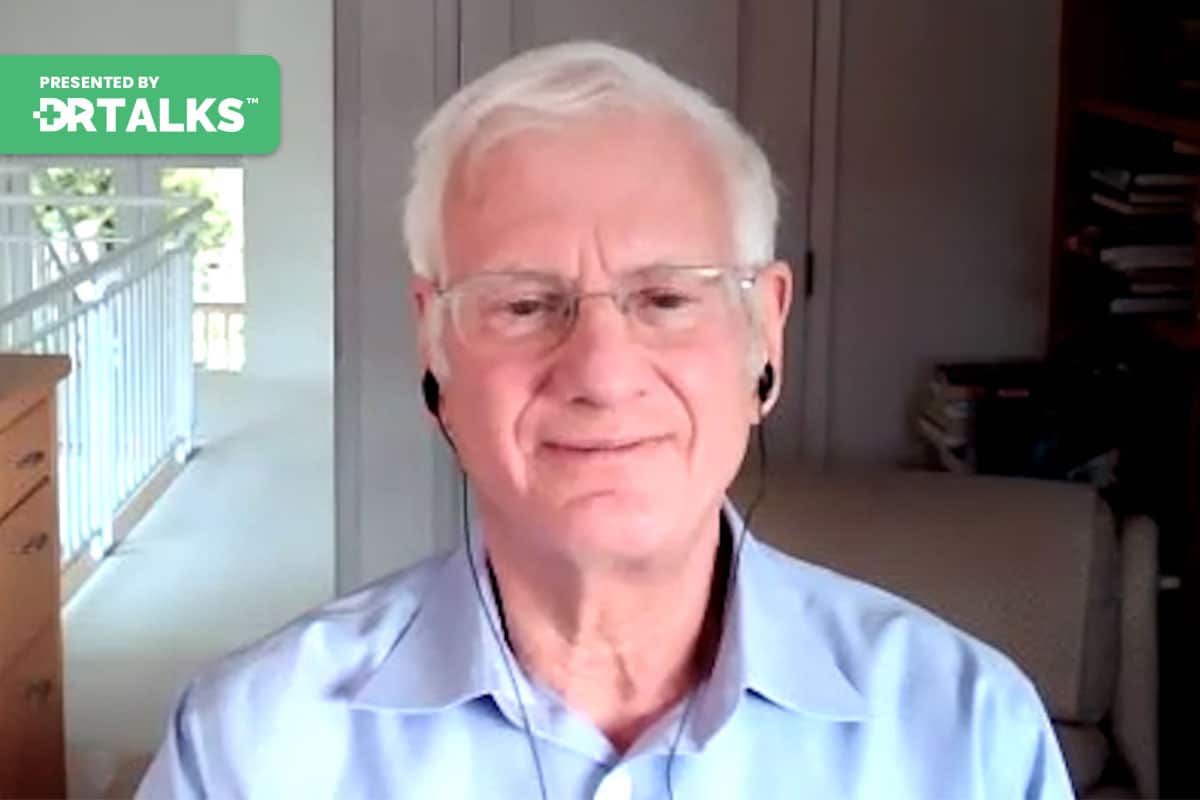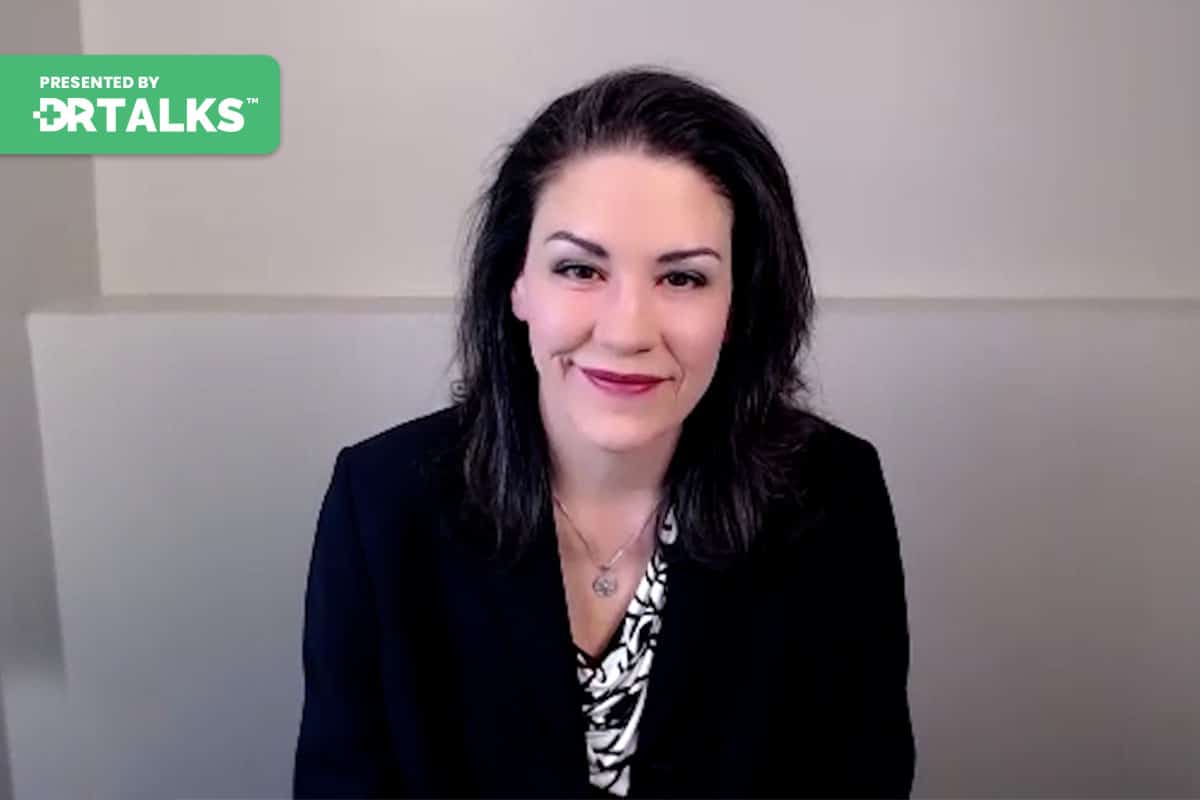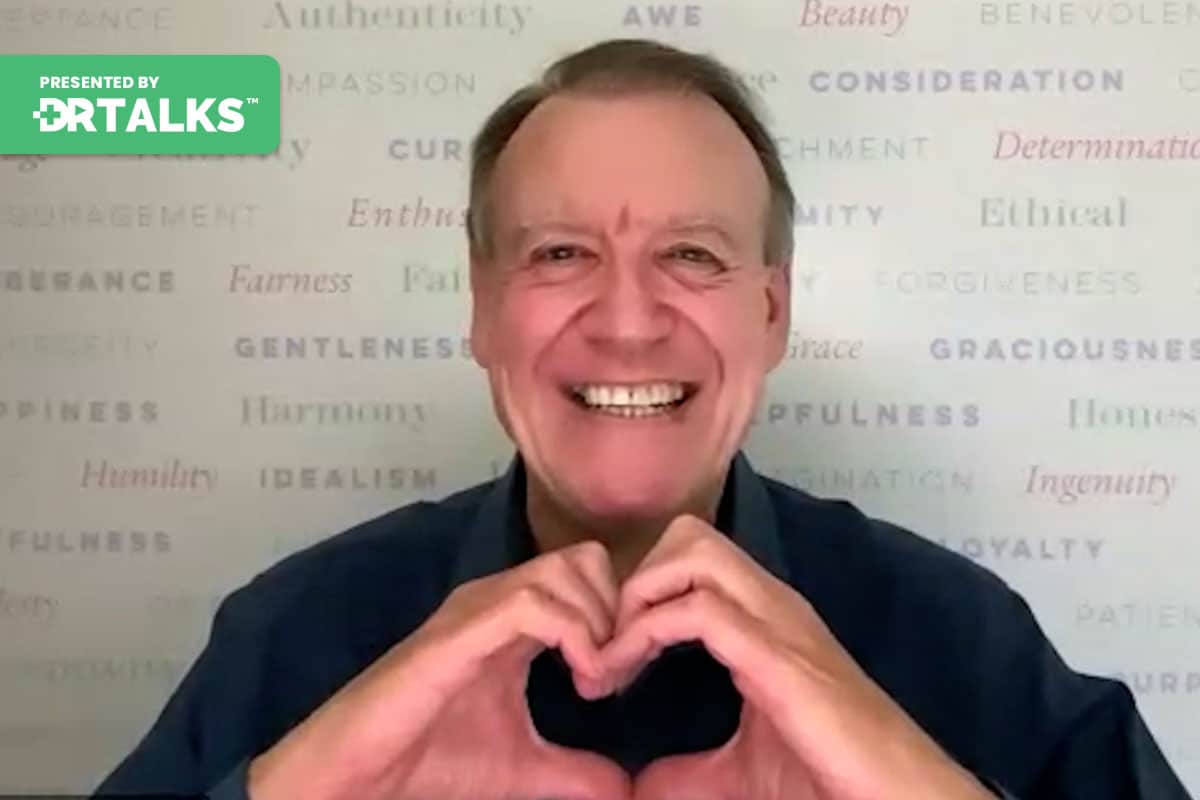Join the discussion below

Dr. Heather Sandison is the founder of Solcere Health Clinic and Marama, the first residential care facility for the elderly of its kind. At Solcere, Dr. Sandison and her team of doctors and health coaches focus primarily on supporting patients looking to optimize cognitive function, prevent mental decline, and reverse... Read More
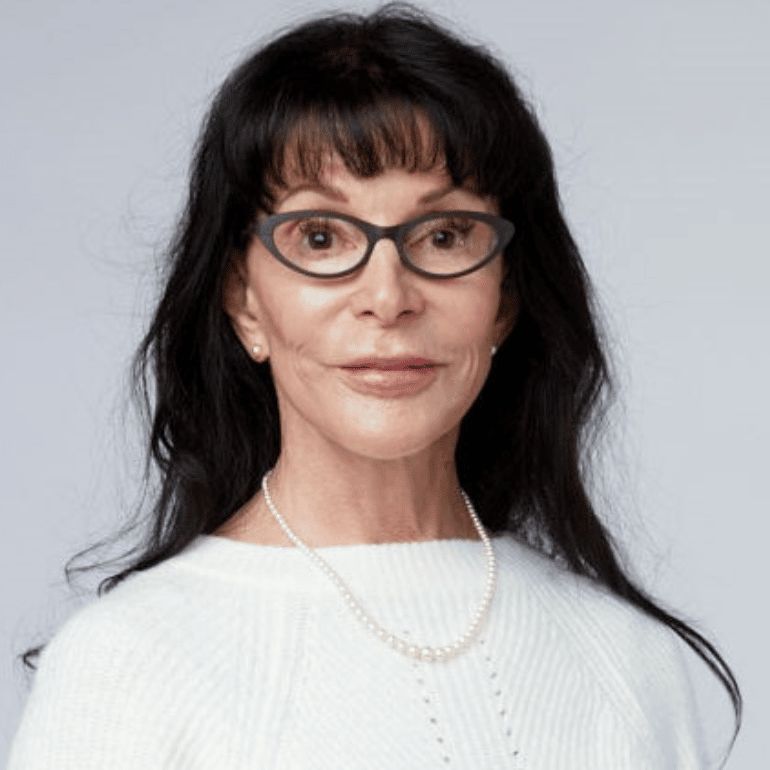
A member of the American Medical Writers Association for more than 25 years, Lara is the Editor of Longevity Medicine Review and Senior Medical Editor od Integrative Medicine Advisors, LLC. Lara’s review articles in Integrative Medicine: A Clinician’s Journal can be found on PubMed and via ResearchGate where she is... Read More
No one should have osteoporosis! It’s completely preventable and reversible, naturally and safely
Lara Pizzorno discusses why osteoporosis is so common even with modern medicine
- Discover the most common causes of osteoporosis (hint: it’s not your genes)
- Understand the essential nutrients your bone needs to rebuild, it’s not just Calcium and Vitamin D
- Learn why exercise is needed to rebuild healthy bones
Heather Sandison, ND
Welcome to this episode of the Reverse Alzheimer’s Summit. I’m delighted to introduce you to Lara Pizzorno, today. She is not only the author of Healthy Bones Helping You, her latest book, she is a clear expert in the connection between nutrition and bone health, and especially in just healthy living and longevity in general. She is clearly committed. You’ll see and learn very quickly. She’s committed to this science, really high integrity information. And I’m so excited that she’s here to share it with you today. Laura, welcome.
Lara Pizzorno, MDiv, MA, LMT
Thank you so much for inviting me to do this. I really hope the information will be helpful for people.
Heather Sandison, ND
It’s an absolute privilege to have you here. Your audience may recognize your last name, Dr. Joe know one of my teachers at Bastia University and one of the founders of Boston University where I was trained. It’s a natural path is Lara’s husband. And so together they work together again in this commitment to the science to share with people all that we know about natural medicine and how it supports health through medical look, many medical journals. And so I’m just thrilled and privileged to have you here today. Thank you again for joining us. Thank you. Very good. Let’s dove into this. You know, obviously, as a woman, bone health is really important to us and so is that what drew you to is you have family members or do you personally suffer with osteoporosis?
Lara Pizzorno, MDiv, MA, LMT
Oh, well, I will be the first woman in all the generations of my family that I know about, like several generations back, to not die prematurely from a hip fracture. Every woman in my family that I know of died that for that reason earlier than they should have. And when I was in my early forties, although I am married to Joe’s for oh, I thought I was doing everything I needed to do to take care of my bones. We were at a medical conference and in the exhibit hall, this is I was like, I’m 74. I was 45 at the time. This is a while ago. And they had a piece of equipment in the exhibit hall at this conference that would check the bone density in your ankle. And they were pushing this for doctors a lot less expensive than a DEXA machine, etc.. So we went over and I, I tried it and I thought, I’m so healthy, I’m going to be wonderful. Well, no, I was severely osteo already at age 45, well before menopause, which I did not go through until I was 52. So I’ve at that point, you know, Joe was kind of embarrassed and I realized that I had to figure it out or I was going to die. So it was a major inspiration for me to dove into all the research on bone health, and I have been focused on it now in pretty much entirely since for the last 34, 45. So it’s like 35 years.
Heather Sandison, ND
If you go back to and I’ll share with our audience that you are the reason my mom is not on bisphosphonates. I read your books when I was in training and realized the nuance here, right? That a lot of the medications that are suggested maybe don’t reduce the risk in the way that we would have hoped that they did. They might actually in crease some of the risk of these highly detrimental fractures like hip fractures and then also the bone degradation in the jaw potentially. So let’s kind of jump into some of these pieces first. Can you just break down what is osteoporosis?
Lara Pizzorno, MDiv, MA, LMT
Osteoporosis is when your bones become so fragile that you can just do normal activities and have a fracture. Its bones are constantly remodeling throughout our life. Every ten years, all the cells in your body will be have been renewed. And every individual’s it varies. But within 7 to 10 years, your bones will have been fully replaced with new, you know, new cells. And so this process is going on all the time. Its bone remodeling involves the break down and removal of old, you know, brittle bone, and it’s replacement with new healthy bone. And many factors cause that process to get out of balance. It’s a lot it’s a lot quicker and easier to demolish something like your bones than to rebuild new bone. I mean, you think about, you know, just compare it to a house or a building. It takes a few hours for a building to be demolished. It takes months for the building to be rebuilt. Well, it’s similar process in your body. So if that balance gets out of place, if the cells that break down your bones, those are called osteoblasts. And if those cells get stimulated too much to remove bone, they will remove more bone than the cells that replace it, which are called osteoblasts can effectively do in time. So the end result of that is you you lose bone, and the time that that will become lost. Your process first it’s osteopenia, it’s called bone thinning, and then you get full out osteoporosis.
Heather Sandison, ND
So osteopenia is kind of a step on the way to osteopenia. Ptosis.
Lara Pizzorno, MDiv, MA, LMT
Right.
Heather Sandison, ND
And that’s something that we can measure. You already mentioned a DEXA scan. There’s other tests that we can use as well to understand our bone health.
Lara Pizzorno, MDiv, MA, LMT
Absolutely. The ones that I really prefer. While one goes with the DEXA scan, it’s called a trabecular bone stand or a TBS. And what that does is it measures. So the DEXA scan just measures. How much bone mineral is there? It doesn’t tell you whether that bone mineral is healthy, if it’s well interconnected. So it’s you know, your bones are resistant to fracture the trabecular bone score measures the connectivity within inside your bones and how how resistant to fracture they are it’s it’s just a different software program that is used to analyze the same DEXA scan that gives you the the DEXA report of bone mineral density too. And it’s called trabecular bone score. And more and more hospitals are offering this now. It’s just it doesn’t add anything to your time there or anything. It it’s some I don’t know if it’s covered by all the insurance, but it’s not that expensive to just pay for that additional scan yourself.
Heather Sandison, ND
So this is like instead of asking just how much bone is there, this is saying, what’s the quality of the bone?
Lara Pizzorno, MDiv, MA, LMT
That’s exactly. Yeah. The bone mineral density actually just tells you how much it doesn’t tell you if it’s in good shape or not. TBS will tell you the quality and.
Heather Sandison, ND
It’s fantastic and such important information because kind of going back to these bisphosphonates or other medications, what my understanding was that they created more bone. So you’re maybe there. They stopped your.
Lara Pizzorno, MDiv, MA, LMT
Bones. They don’t create more bone. They prevent the removal of old bone. And the whole bone renewal process is it’s forget the exact medical term that’s used, but it’s linked. It’s you have to have the first thing has to happen. The osteoclasts have to be activated for the osteoblasts to then be activated. And so when the osteoblasts become active, they liberate all these nutrients and things that have been stored in your bones and that is what activates the osteoblasts to come in and use those nutrients and rebuild bone for you. If you don’t have the osteo class releasing all of that, you don’t get the osteoblasts activated. And so you ab so the what did this phosphates do is they, they poisoned osteoblasts. So you never get step one in the process. I mean, yes, we don’t want too much osteoblasts activity, but you have to have some or your bones will not renew. So that’s why. Over. Hmm.
Heather Sandison, ND
So then your dexa might look better, but this nuance between not just the amount of bone, but the quality of bone is what you’re lacking with the use of this bisphosphonates.
Lara Pizzorno, MDiv, MA, LMT
And that is why after a few years, your risk of fracture goes up because the bone that you have is not resilient.
Heather Sandison, ND
Right. Okay. So you were telling me right before we started recording and I was say, hey, wait, I want to share this with everyone that there is a new once again when it comes to the nutrient requirements for people who are APOE E4 positive. So can you tell us a little bit more about that?
Lara Pizzorno, MDiv, MA, LMT
Sure. People who are applying for positive clearance out there are vitamin K a lot faster than the average person. And so they know people who are APOE4 positive need more vitamin K than the average person. And this should be there. There are lab tests that can be run to check your vitamin K status. So what vitamin K does is it activates the it actually it activates proteins in your that your brain needs to protect itself as well. That’s a protein called gauss six. But for bone on the vitamin K activates two types of proteins that are essential for bone health. One is called osteo calcium. And when osteo calcium becomes activated, it pulls calcium into your bones and when it’s not activated, that doesn’t happen. Sure. Well, okay, the other thing the other protein that’s activated by vitamin K is vitamin K2, not vitamin K. One that does these is called matrix glob protein.
And that enzyme prevents calcium from depositing where you don’t want it to like in your cardiovascular system, in your blood vessels, in your particularly in your kidneys, you have very, very tiny little fragile, you know, blood supply vessels in your kidneys. And when in your kidneys, that is the section of your body that is so high. My cat is walking across the screen. That is the area of your body where the majority of the activation of vitamin D occurs. Now, vitamin D that’s circulating in your bloodstream gets converted to a form called 25 HD in your liver, and then it goes to your kidneys. And in your kidneys it gets activated into a form called 125 D That’s the hormonal active form. That is the form that does things for you that the form that circulates in your bloodstream. 25 HD Sorry, my cat is not active and it doesn’t do all the things that you need vitamin D to do for you. And Vitamin D is incredibly protective for the brain as well as requiring that is required for us to absorb calcium.
Heather Sandison, ND
I love it. This is such a good reminder. This is why we’re having this conversation. Right? Right. We know that women are at higher risk of developing osteoporosis, particularly postmenopausal women, and it’s very similar risk factors for dementia. And then if you throw a bone E for a positive genetic status on top of it, we have even more risk. And a lot of our audience here fits into that category. Not everyone, but a lot of us. And so the nutrients just to summarize the nutrients and let’s expand on that as well. Actually, vitamin D and K are important not only for brain health, but also for bone health, of course.
Lara Pizzorno, MDiv, MA, LMT
Are essential. Yeah, they’re absolutely essential.
Heather Sandison, ND
And what are some of the other nutrients? You know, calcium comes up so much, but I think there’s a lot of misunderstanding about calcium being so important for bones or maybe the ways or the reasons that that’s important. And the dairy connection here. I would love for you to go into that. And then what other nutrients that we think of, if we want strong bones.
Lara Pizzorno, MDiv, MA, LMT
Wow. Well, there’s a lot of them. I tried to summarize the key ones in Healthy Bones Health. You know, there are at least 13 or 14 trace minerals that are really important for bone, and they’re no longer in our food supply because of the conventional fertilizer or the high phosphate fertilizers that are used now to grow our food on do not replace these minerals in the soil. And in fact, they put cadmium into the soil, which is the toxic heavy metal that causes bone loss. Didn’t look at cadmium then and Alzheimer’s, but I would not be surprised to find a connection because cadmium destroys your kidneys. You know, there’s a lot of other things cascade down from that. I’m sorry you asked about calcium.
Heather Sandison, ND
It’s just about calcium and how we should consume it. Maybe things to avoid it. What makes sense there? Because I know a lot of my patients will come in and they’ve seen a conventional medical doctor and they’re like, take a thousand milligrams of calcium every day. Yeah. It’s not the right thing to do.
Lara Pizzorno, MDiv, MA, LMT
Well, we need post-menopausal women who I am assuming is going to be a significant portion of our audience. So then that’s me. I know the most about my group, so I will talk primarily about that then. Men need calcium too, but postmenopausal women need to 100 milligrams to 1500 milligrams of calcium daily. And that’s total. Okay. You’re supposed to be eating food, real food, which has lots of other nutrients in it besides just calcium and you need to look at how much calcium your food is providing for you and then make up whatever you’re lacking with it with the supplement. But a thousand taking supplemental calcium at a dose of a thousand milligrams a day. Even the average intake of calcium from the diet in the US and postmenopausal women is between 450 and 650 milligrams daily. So that’s too much. But you don’t want to be taking it, taking just a calcium supplement. The other thing is that calcium doesn’t work by itself. Calcium for you to absorb calcium, you have to have vitamin D and it has to have been activated by your kidneys. Okay. And to regulate what happens to the vitamin D once you have absorbed it, you need vitamin K2. If you don’t have K2 around, you will not activate osteo coulson nature, squash, protein and gal six, which are going to make sure that that calcium is your brain doesn’t get overloaded with calcium. It goes to your bones and it doesn’t go to your vasculature. So these things all work together. So I, you know, you can’t really talk about a nutrient nutrients are team players, right.
Heather Sandison, ND
So what foods do you point people in the direction of to get healthy nutrients for their bones?
Lara Pizzorno, MDiv, MA, LMT
If someone is not allergic to two dairy products, I highly recommend foods like yogurt organic organically, organic yogurt from derived from pastured cows so that it has a healthy omega omega six three balanced and some probiotic organisms in it. We try to have yogurt almost every day. If you can’t have that, if you can’t have dairy products, there are a variety of alternative yogurts now made from cashew and coconut and various other options for people that cannot have dairy products. But you can have dairy products. They are really beneficial if they’re from pastured cows. Right. All right. Not the conventional lead produced dairy products that have many things in them. You do not want, you know, hormones and pesticide residues and a lot of other things that are inflammatory that you want to avoid.
Heather Sandison, ND
And then leafy greens have a lot of minerals. Oh.
Lara Pizzorno, MDiv, MA, LMT
Yeah, absolutely. I cow is probably the superstar. But, you know, any leafy green that you like?
Heather Sandison, ND
Yeah.
Lara Pizzorno, MDiv, MA, LMT
And it’s a really good idea to eat lots of them, you know, eat a variety of kale and spinach and. Well, with spinach, there’s a proviso. If you are someone who makes smoothies and you can put in, you know, pounds of spinach, like normal human beings don’t eat pounds of spinach in the salad. It’s too much spinach. And then it can cause oxalate. It has oxalic acid in it and it can cause problems for your kidneys. So you don’t want to overdose on spinach by having pounds of that every day. But spinach is a really healthful green kale, arugula, Swiss chard is wonderful. And these greens not only have vitamin K one, which your body if your digestive system is working properly, your gut flora can convert K one into k two. But they, they also have like Newt, you know, minerals and things that are organically grown are going to have all these other compounds that your bones need, don’t have phenols, they don’t have trace minerals, magnesium, which is really important for bone and also for protecting your brain. Magnesium plays a huge role in protecting the brain.
Heather Sandison, ND
And there’s so much overlap. Yeah, I.
Lara Pizzorno, MDiv, MA, LMT
Thought I probably. That was too much information all at once. Not at.
Heather Sandison, ND
All. Okay. So we’ve talked about nutrients when we’re piece I want people to hear there too. Is there anything really important to avoid? Like are there things, especially in a standard American diet that are commonly consumed, that are hard on our bones?
Lara Pizzorno, MDiv, MA, LMT
Oh, yes. Yeah. Many, many things on pretty much processed foods are bad for you. You know, they are they come in plastic containers. I’m sure Joe talked about this. Some of the compounds in the plasticizers are screw up, how your metabolism works on your they’re high and so very high in sodium, which is really destructive for the kidneys. And it also causes other hormones to increase like FGF 23, and it causes imbalances that promote cardiovascular disease. Just if you can possibly just buy real food, right? You know, you can’t go wrong with like walking around the perimeter of the grocery store where the food has to be refrigerated or it will spoil, you know, and buying real food and trying to cook for yourself as much as you can. I think a lot of the grocery stores now, especially the ones that have organic foods, will have like a deli or something where you can buy some prepared foods. I realize it is challenging for people to cook for themselves.
Heather Sandison, ND
It’s time consuming. Right. I, I can relate. Yeah. So, okay, nutrients are one component of this. There are other components like lunch and the hormonal component of bone health. What are your thoughts? Especially as people age about hormonal signaling to bones?
Lara Pizzorno, MDiv, MA, LMT
Well, I. I am a strong proponent of bioidentical hormone replacement, unlike the conventional hormone replacement, which uses synthetic forms and forms that are altered of the hormones, that are not like the natural hormones that our bodies really produce, although there is some improvement in that now we’re seeing more natural forms of bioidentical hormones in in the conventional prescriptions. But you really want to estrogen plays a huge role and it is also hugely neuroprotective. So when we lose that protective, that is one of the reasons that women are more at risk of developing osteoporosis and cognitive decline than men because of the loss of estrogen. And estrogen is hugely anti-inflammatory and it protects both our bones and our brains through dozens of mechanisms. And I strongly recommend considering bioidentical hormone replacement. There has been a lot of discussion of late that it’s dangerous for people if they haven’t started it right away. That is not true. If you’re properly tested and monitored, you should have no problems with it. And that and the problems that have been associated with hormone replacement are not seen with bioidentical hormone replacement.
They’re only seen with conventional hormone replacement. So I don’t know if you’re if you’re working with a physician who’s competent, you will have either it’s called the Dutch Test or Meridian Valley Lab offers these 24 hour urine comprehensive hormone. Analyzes that, give you a full overview of where your body is and how it’s metabolizing your hormones. So if something is off, you can use natural, you know, pretty much dietary therapies to reverse that and have healthier metabolites. And also with bioidentical estrogen you can it’s not just estradiol is a very potent form of estrogen. It is the only form that is used in conventional hormone replacement, the biased form, the bioidentical hormone replacement form of estrogen that is most commonly used is a combination of estriol, which is another type of estrogen with estradiol. And it’s primarily it’s 80% estriol, which is an extremely safe and gentle form of estrogen that gets the job done that you want done without increasing your risk of cardiovascular disease and cancer. And then about 20% of estradiol.
Heather Sandison, ND
So that’s what I routinely is. Now, is there a goal for DHEA? Pregnant, alone, progesterone or testosterone and bone health?
Lara Pizzorno, MDiv, MA, LMT
Oh, absolutely. And you cannot. So progesterone is involved in osteoblasts, production and activity, and you cannot you should never, ever, ever have estrogen without balancing it with progesterone. The two issues with estrogen being potentially causing cancer are greatly exacerbated when progesterone is not there. But what you want to do, and I’ll quote a physician who has been like a hero for me for 50 years, Doctor Jonathan Wright, his most one of the things that he has that I think is the most important is mimic nature. You want to as closely as possible, mimic what your body did when you were premenopausal and producing hormones. So you think all the hormones you want to, you know.
Heather Sandison, ND
Yeah, I see that you do want to cycle the hormones. You’re a fan of that?
Lara Pizzorno, MDiv, MA, LMT
Absolutely. Estrogen. Well, so the first couple of weeks, that first ten days of the cycle you use biased and DHEA, DHEA can be is very protective in many ways and can eventually be converted to progesterone but and testosterone which also helps build bone back. So for the first ten days you just use biased with DHEA and then for the remainder of the cycle you add in progesterone. And then at the end of the cycle, you take three days off and you don’t use you could continue to use DHEA, but you don’t use biased and you don’t use progesterone. That’s what your body did when you were.
Heather Sandison, ND
When you were.
Lara Pizzorno, MDiv, MA, LMT
Menopausal and healthy.
Heather Sandison, ND
Right? Right, right. Okay. So hormones are a really important piece of bone health as well as brain health. And another big piece of overlap is exercise. So what is the most important type of exercise? If we want to take care of our bones as we age?
Lara Pizzorno, MDiv, MA, LMT
Well, it has to be weight bearing. You know, unfortunately, swimming is not going to do it. You’ve got to, you know, whatever you like to do. I mean, just get out and walk, you know, get outside. For one thing, being outside in nature is very restorative on many levels. And there is a huge psycho spiritual connection that we all ignore, but really is impacting us every second of our lives. So you want to try to support that, but there are many types of exercise that will work. I, I personally I’m stopped. Pilates is certified, so I’ve done that for many years. But you can and you can do mat work at home. You don’t have to go somewhere and pay, you know, $100 for a session to exercise. But you can do Pilates, not work. There’s a my favorite form of exercise for the last few years has been what I call bar three.
And it’s a combination of ballet, yoga and Pilates exercises, and you can do it in your own home. All you need is a mat on the floor and a computer monitor. So that you can watch the screen. And there are you know, there are bar studios in many, many areas of the country. If you don’t have one, you can join barthree.com online and you can get access to, you know, thousands and thousands of exercise classes. And they update them all the time. So those are really good. But you want something that helps you maintain your muscle mass because the term for loss of muscle, which is very commonly seen with aging and is a huge factor in osteoporosis, is called sarcopenia. So it’s muscle wasting.
So we want to maintain your muscles when you are active and our muscles attach to our bones and they put stress on our bones that activates a type of cell. It’s the most prevalent type of cell in your bones. It’s called an osteo site. And the osteo sites, they’re meccano sensors and they’re activated by exercise because which stresses put stress on areas and they tell you, bones, hey, rebuild, get stronger. And if you don’t exercise, that doesn’t happen. So you know how when astronauts go into space and they’re not, they’re weightless and so on, and they lose bone. So it’s the same for us if we’re not there. And the reason why is they’re there. Osteo sites are not being activated.
Heather Sandison, ND
So if one of my listeners has already gotten a diagnosis of osteoporosis, is there hope for them?
Lara Pizzorno, MDiv, MA, LMT
Oh, absolutely. Oh, my goodness. Yes. That’s why I wrote the book. Like no one should have osteoporosis. It’s completely preventable. It’s completely reversible. You know, I suppose if you’re if you’ve broken half the bones in your body, you may it may be impossible. But outside of that, if you just have a diagnosis of osteoporosis, I have now I’m the expert on a bone health group. It’s called the Alger Call Community. It’s on Facebook. And it now has started three years ago. It now has 28,000 members. When I have now and I try to respond to people’s questions about things that they can do to help support their bone health. And I have now personally seen at least four or 500 over the last three years, DEXA scans before and after doing the things that I recommend in healthy bones, healthy you. That’s word I will have you know ten 15% increase in in a year in bone mineral density from dance I’ve seen these over and over and over.
Heather Sandison, ND
It’s so exciting. And I can relate because I’ve seen MOCA scores, the cognitive testing go up and I’m sure, like you, many of the other doctors, conventional doctors, they’re just not used to seeing it. So they look at these tests and they go, What did you do the test run last time where they feel like something’s off because it’s just so contrary to what they’re used to seeing. And my mom’s doctor did that to her. Her DEXA scan had improved. It was wrong. He thought it was wrong. It was really funny. But she said, No, no, I’ve been doing everything my daughter told me to do and it’s working. It’s really fun to see that and so hopeful, so I want to make sure everybody knows exactly where to find that group on Facebook. So can people join you?
Lara Pizzorno, MDiv, MA, LMT
Pardon me?
Heather Sandison, ND
And people join.
Lara Pizzorno, MDiv, MA, LMT
On. So it is a group that is supported by a company that makes, in my opinion, the best and most effective bone health supplement available. It’s the only bone health supplement that has been shown. And in three human studies now, the last one, a seven year study of postmenopausal women with severe osteoporosis who reversed it. At any rate, that company supports the Facebook community. And so do you. If you use any of their products, they only have a couple of products. The bone health supplement that I think is that I use myself and I think it’s so important. It’s called Albacore Plus that. And then they have a strontium product. Anybody here who has osteoporosis is probably familiar with the use of natural forms of strontium to promote bone health. Strontium is just amazing. It really, really promotes bone health. And then they have a really good omega three supplement. So if your mood is any of the bones.
Heather Sandison, ND
Spell it. We should spell algae cow for our listener.
Lara Pizzorno, MDiv, MA, LMT
I’m sure a l g a e c a l.
Heather Sandison, ND
Excellent. Okay.
Lara Pizzorno, MDiv, MA, LMT
So with the use of any of those products, you get access to the Facebook community and you and you get access to me. I try, but I yeah, I do. I do my best to respond to questions and I do lectures and stuff like that that are videotaped for that group.
Heather Sandison, ND
Wow. Okay. So this is really exciting. And how else can our listeners find out more about you and where to get your books?
Lara Pizzorno, MDiv, MA, LMT
Well, you can Google me. You can look for me on net. I’ve published a variety of articles that are in PubMed list journals. I’m on ResearchGate. Yeah. So I, I think that would be the easiest way. I think you can go to Amazon and get healthy bones health.
Heather Sandison, ND
You I love it. And then through algae kelp and that Facebook community there’s almost direct access to you to get your insights and wisdom and also to this amazing community that is showing what’s possible for those suffering with osteoporosis and how it is. It’s totally doable to reverse it.
Lara Pizzorno, MDiv, MA, LMT
Yes.
Heather Sandison, ND
This is really exciting stuff to share. And I just so appreciate you taking the time to spread this message of hope, to let people know that there are ways to increase their bone health. And by the way, when you do that, you’re also improving your brain health because there’s so much overlap between the two in terms of nutrients per modal signaling exercise and I’m sure much more. We didn’t even talk about sleep. Is there a connection between sleep and bone health?
Lara Pizzorno, MDiv, MA, LMT
Absolutely. Circadian rhythms affect how your metabolism runs and when they’re off. Nothing is working really properly, and those things affect bone. You know, I, I hadn’t been as aware of the connections between osteoporosis and Alzheimer’s until recently. I just dove into the research to look at it. And on some of the studies I saw suggested there was a six fold increase in risk for Alzheimer’s with osteoporosis. So, I mean, it really is something to look into it. Right. And it is correctable. It is really correctable. And all the things that you do to support the health of your bones, support the health of your brain.
Heather Sandison, ND
It’s so exciting and great. It’s the double whammy. We go, we’re getting.
Lara Pizzorno, MDiv, MA, LMT
Married that’s very efficient. Yes, it can be very efficient.
Heather Sandison, ND
We love about that. Lara, thank you so much for joining us. It’s such a privilege to have you. I couldn’t be more grateful for your time and for your expertize and wisdom. Thank you for joining us.
Lara Pizzorno, MDiv, MA, LMT
You are so welcome. Right. It’s my wish that no one should have osteoporosis any more. And I do think we can correct it. It’s possible together. All of us have amazing.
Heather Sandison, ND
Thank you for doing the work we do in the world. We’re so lucky to have you.
Lara Pizzorno, MDiv, MA, LMT
I feel the same way about you, so. Okay. All right, dear.
Downloads
